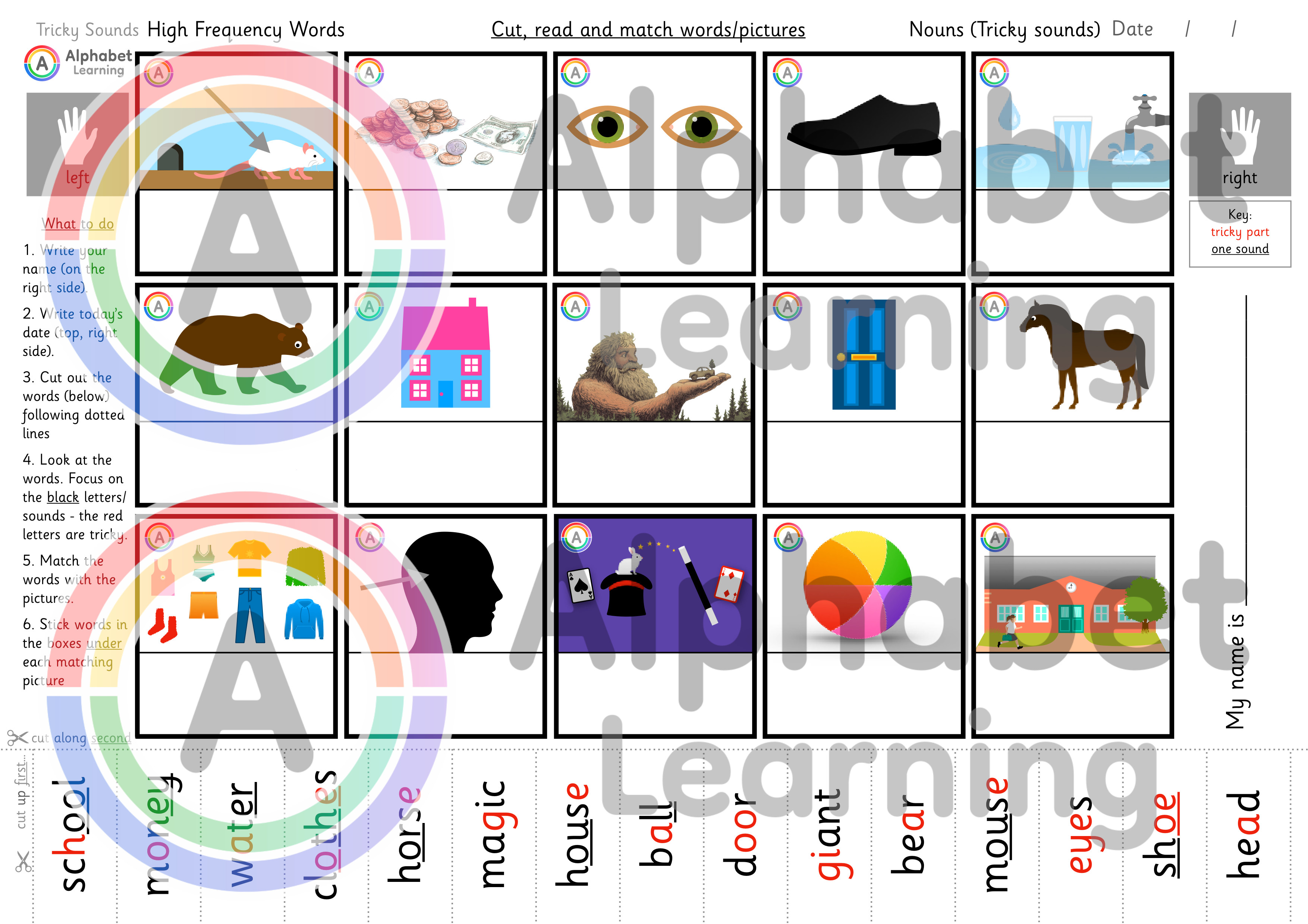

New online service coming soon with FREE downloads (including this resource) available! For more information visit
What’s included?
This download includes x1 sheet, landscape orientation, pdf format to look at/read ‘tricky’ words (nouns) from the first 200 high frequency word list. This set of words has been grouped as words that are ‘tricky’.
What’s it for?
This activity has been designed to give learners an opportunity to look more closely at a set of the first 200 high frequency words and practise reading these words on sight by looking more closely at them. Learners can focus on the black letters (red letters indicate where the words are tricky) and use their phonics knowledge (as well as the images provided) to ‘work out’ these words (all nouns).
This is a simple, predictable activity to promote independence and consolidate learning. This activity is ideal for individuals/groups to be getting on with independently, during ‘busy/quiet times’ or those needing some individual 1:1 support.
Who’s it for?
This resource has been designed for pupils in Year 1 who are learning these sounds (and words) for the first time, pupils in Y2 who need some practise/reinforcement of these sounds/words. This resource is also suitable for older learners with additional learning needs.
How to use it?
Learners cut out words (following dotted lines) at the base of the sheet, sound out the graphemes to read the word, then match the word with the image - placing word cards in the boxes underneath the images. Word cards are to be secured with glue once learners are happy they have matched the words with the images.
Tip!
To avoid words getting lost/in a muddle, encourage learners to only cut out one word at a time, read and match it to the picture and once it has been secured to the sheet with glue, move on to cutting out the next word.
Resource Details…
These words are all from the list of ‘first 200 high frequency words’ to read and spell. It is possible to ‘sound out’ these words.
Where individual letters are underlined - this indicates that together these (underlined) letters have one sound, e.g. ‘ey’ in ‘money’. Tricky / ‘irregular’ letters are identified in red, such as ‘a’ in ‘ball’.
Important Message
Any issues please let us know - we are happy to make changes.
Something went wrong, please try again later.
This resource hasn't been reviewed yet
To ensure quality for our reviews, only customers who have purchased this resource can review it
to let us know if it violates our terms and conditions.
Our customer service team will review your report and will be in touch.